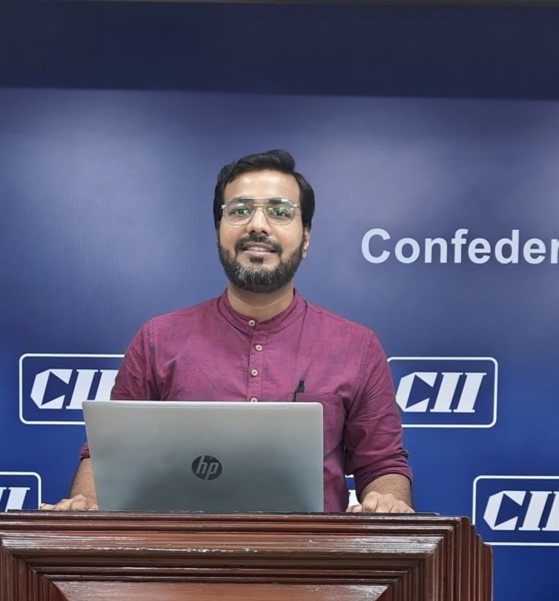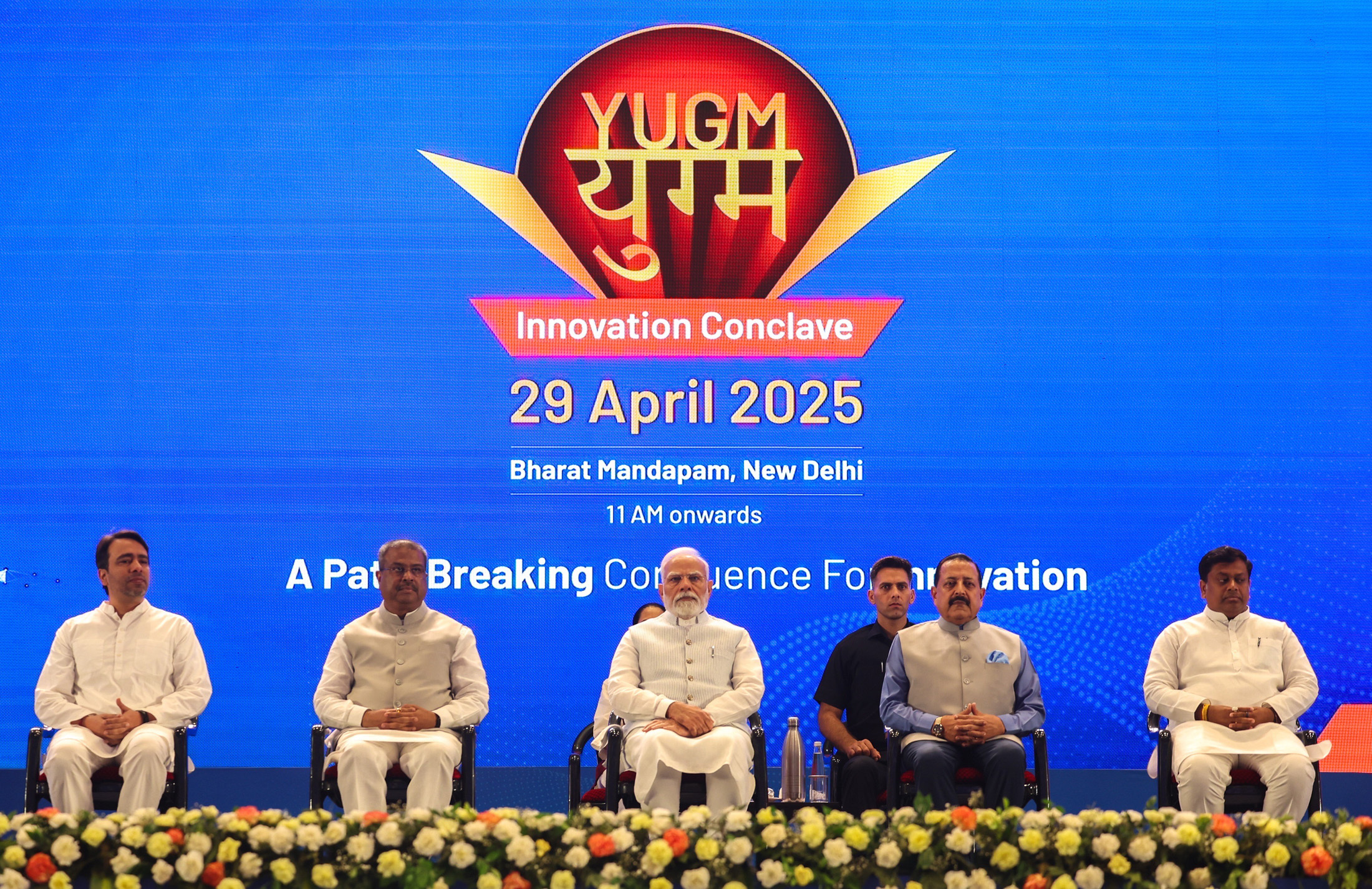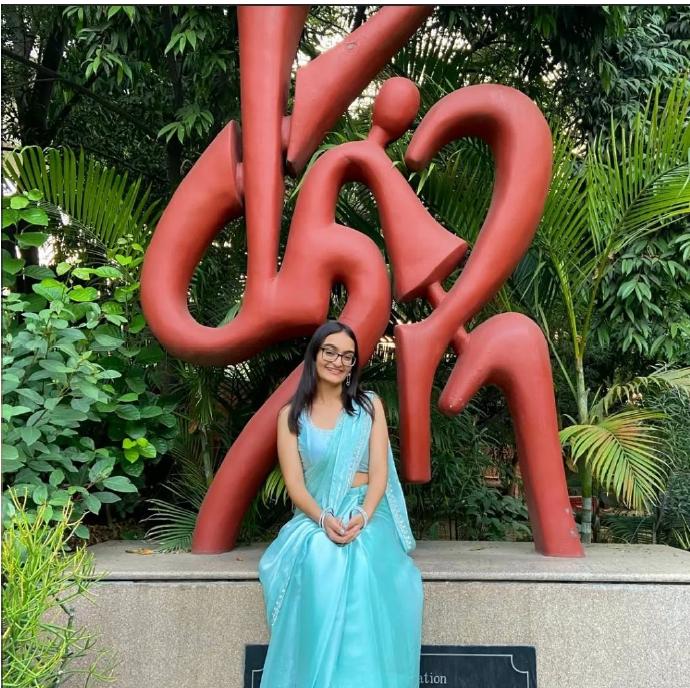India’s patent filings have doubled in just over a decade, surging from around 40,000 in 2014 to over 80,000 by 2025. The country is now ranked 40th in the Global Innovation Index 2023, up from 81st in 2015, reflecting the impact of sustained policy focus and institutional reform.
The YUGM Innovation Conclave, held at Bharat Mandapam in New Delhi on April 29, 2025, stands as a monumental step toward India’s aspiration to become a global hub for innovation. Addressed by Prime Minister Shri Narendra Modi, the conclave was not just a ceremonial gathering but a policy-aligned catalyst that showcased the strategic alignment of government, academia, industry, and research institutions to foster innovation, drive deep-tech advancements, and empower India’s youth. This article delves into the key policy takeaways and transformative initiatives announced and highlighted at the conclave.
Policy Thrust on Education and Innovation Infrastructure
India’s developmental vision under Prime Minister Narendra Modi places a powerful emphasis on the trinity of Talent, Temperament, and Technology—a framework aimed at harnessing the country’s vast human potential to drive sustainable, inclusive growth.
At the heart of this vision is the National Education Policy (NEP) 2020, a transformative blueprint that reorients India’s academic landscape to meet the demands of a rapidly changing global economy. NEP 2020 emphasizes multidisciplinary learning, critical thinking, and the integration of vocational training from early grades, marking a departure from rote learning to a more inquiry-based, learner-centric approach.
To operationalize this vision, the government has introduced a new National Curriculum Framework (NCF) that aligns classroom content with competencies relevant to the 21st century. Initiatives like PM e-Vidya, DIKSHA, and Swayam have expanded digital learning access to millions, bridging the urban-rural divide. Notably, the translation of textbooks into more than 30 Indian and 7 foreign languages ensures cultural and linguistic inclusivity, allowing students across diverse regions to access quality content in their mother tongue or preferred language.
On the innovation front, India is witnessing a structural transformation in research and development. The number of research parks has grown from just three before 2014 to 13 today, serving as vital hubs where academia, startups, and industry converge to create cutting-edge solutions. The establishment of Research and Development Cells in nearly 6,000 higher education institutions fosters an institutional culture of curiosity and inquiry across a large number of institutions.
This ecosystem is bearing fruit: India’s patent filings have doubled in just over a decade, surging from around 40,000 in 2014 to over 80,000 by 2025. The country is now ranked 40th in the Global Innovation Index 2023, up from 81st in 2015, reflecting the impact of sustained policy focus and institutional reform.
The creation of the National Research Foundation (NRF), backed by a ₹50,000 crore investment, marks a landmark moment in India’s science and innovation landscape. Designed to fund and coordinate cutting-edge research across disciplines, the NRF will deepen collaboration among universities, industry, and government, and support high-risk, high-impact research essential for global leadership in technologies such as artificial intelligence, quantum computing, and green energy.
Collectively, these reforms reflect a decisive policy thrust towards building an education and innovation superstructure that is inclusive, future-ready, and globally competitive, laying the intellectual foundation for a self-reliant and knowledge-driven India.
Bridging Academia and Industry: The YUGM Model
In an era defined by technological disruption and global knowledge competition, the Government of India has unveiled YUGM—a transformative policy model that embodies the principle of ‘confluence’ between academia, industry, and government. YUGM is designed to catalyze high-impact research, nurture next-generation innovators, and fast-track the commercialization of breakthrough technologies.
At its core, YUGM is a ₹1,400 crore collaborative investment between the Government of India and the Wadhwani Foundation, reflecting a bold new paradigm of public-private partnership in the national innovation ecosystem. The model addresses a longstanding gap in India’s research-to-market pipeline by creating deep institutional linkages and scalable platforms for cutting-edge science.
- Wadhwani School of AI and Intelligent Systems – IIT Kanpur
With an investment of ₹500 crores, this state-of-the-art centre will span 150,000 sq. ft. and become a flagship institution for Artificial Intelligence and Intelligent Systems. Offering degree programs from B.Tech to postdoctoral research, the school will anchor interdisciplinary R&D in frontier areas including cybersecurity, robotics, AI governance and ethics, and applied machine learning. The facility will also establish 50 external innovation hubs across India, bringing AI-driven solutions to sectors like agriculture, education, disaster management, and public health. The school aims to become a global talent magnet while fostering indigenous AI capacity tailored to India’s socio-economic context.
- Wadhwani Hub for Biosciences and Health – IIT Bombay
With an allocation of ₹300 crores, this 120,000 sq. ft. facility will focus on medical technologies, health systems innovation, and biotech research. The hub will support the design and deployment of affordable medical devices, diagnostics, and digital health platforms. It will serve as a translational research accelerator, linking academic discoveries with clinical and industrial pathways for large-scale societal impact.
- National Co-Funding Framework with ANRF
A separate corpus of ₹200 crore under the Anusandhan National Research Foundation (ANRF) will enable the co-funding of late-stage research, translating intellectual capital into commercially viable products and services. Target areas include AI, quantum technologies, biosciences, smart mobility, advanced materials, and sustainable energy. By leveraging private sector expertise and risk capital, this framework enables promising technologies to transition from the lab to the economy.
Together, these interventions represent more than the sum of their parts. YUGM is not just a series of isolated investments—it is a scalable policy blueprint for India’s innovation future, offering a replicable model for mission-driven, cross-sectoral collaboration. It bridges the traditional silos between academia and industry, converting research into real-world outcomes and ensuring that Indian innovation is globally competitive, economically productive, and socially transformative.
AI and Future Tech as Strategic Imperatives
India is positioning itself not merely as a consumer of technology but as a global hub for innovation and strategic tech leadership. Emphasizing speed, scale, and sovereignty in technological development, the Prime Minister articulated a clear mandate: the journey from idea to prototype to product must be accelerated through institutional, educational, and industrial convergence.
At the heart of this vision lies the national commitment to “Make AI in India and Make AI Work for India”. This dual-purpose framework is being operationalized through the India-AI Mission, a policy initiative that integrates AI Centres of Excellence across premier institutions, tasked with advancing foundational research, indigenous algorithms, and sector-specific AI applications. A concerted push to embed AI in medical education through collaborations between IITs and AIIMS, preparing the next generation of practitioners and innovators in meditech, diagnostics, and health data sciences.
Expanding Equitable Knowledge Infrastructure
India’s AI and future tech strategy is underpinned by a broader commitment to democratize access to global knowledge systems. The launch of the One Nation, One Subscription initiative offers nationwide access to international research journals, enabling students, researchers, and start-ups, regardless of their geographic location or income, to stay at the forefront of the global scientific literature.
This is not just a digital inclusion policy—it is a structural enabler for academic equity and innovation competitiveness.
Skilling for the Innovation Economy
Recognizing that future technology requires future-ready talent, the government has launched the PM Vidya Lakshmi Scheme, which integrates education financing with skilling pathways, providing accessible loans, scholarships, and career guidance. Simultaneously, over 7,000 internship and innovation cells have been established across higher education institutions, serving as bridges between curriculum and industry.
These cells provide real-time exposure to R&D labs, start-ups, and global corporations, allowing students to develop industry-relevant competencies in AI, quantum computing, robotics, and emerging tech.
Through this integrated ecosystem, spanning policy, pedagogy, and practice, India is not only building technological capabilities but also fostering a resilient, inclusive, and future-facing innovation economy. AI and frontier technologies are no longer sectoral add-ons—they are strategic imperatives that define India’s trajectory in the coming decades.
Global Recognition and Strategic Outreach
India’s ascent on the global academic stage is not just a story of domestic reform but one of strategic outreach and soft power projection. The country’s rise in the QS World University Rankings—from 9 institutions in 2014 to 46 in 2025— reflects a decade of deliberate investment in quality education, research, and institutional autonomy. This leap underscores India’s transformation from a knowledge consumer to a globally respected knowledge producer.
The establishment of IIT Delhi’s campus in Abu Dhabi and IIM Ahmedabad’s campus in Dubai marks a pivotal step in India’s education diplomacy. These overseas institutions serve as ambassadors of India’s intellectual capital, expanding India’s educational footprint and fostering cross-border academic networks. At the same time, policy reforms that allow foreign universities to set up campuses in India signal a commitment to two-way academic exchange, promoting not only inward innovation but also outward engagement, thereby enriching India’s research ecosystem with global best practices.
This dual-track strategy of exporting Indian educational excellence while importing global academic diversity reflects a confident, outward-looking India—one that is shaping, not just responding to, the global knowledge economy.
Toward Viksit Bharat@2047
The YUGM Innovation Conclave was not merely an event—it was a pivotal moment in policy. It crystallized the Modi government’s multi-decade vision to transform India into a Viksit Bharat by 2047, aligning technological self-reliance with youth empowerment, education reform with global outreach, and innovation ecosystems with inclusive development.
What emerged clearly is a seamless integration of leadership, policy, and grassroots implementation:
- Education is no longer viewed in isolation but as the foundation of national capability.
- Research funding, including the ₹50,000 crore National Research Foundation, is being strategically deployed to energize innovation from lab to market.
- Industry-academia partnerships, like those under the YUGM model, are institutionalizing a culture of co-creation and problem-solving.
- Yuvashakti, India’s youth, are not passive beneficiaries but active architects of this transformation—armed with skills, tools, and platforms to lead in AI, biotech, quantum, and frontier technologies.
In essence, India’s innovation journey is now policy-backed, globally engaged, and future-facing.
As the nation marches toward its centenary of independence in 2047, it does so with a clear goal: to become a self-reliant, innovation-driven economy rooted in Indian values and global vision. The YUGM Conclave reaffirmed that this future will not be imported—it will be built in India, by India, and for the world.
The views and opinions expressed here belong solely to the author and do not reflect the views of BlueKraft Digital Foundation.







